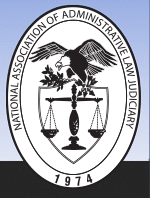Abstract
In the last ten to fifteen years, state courts have responded to a tidal wave of self-represented litigants with a wide range of innovations that are fundamentally transforming the courts. These innovations impact the whole system and range from new ways of accepting cases into the system to innovative courtroom procedures and management practices, and from a more proactive process of managing the flow of cases to innovations that help make sure that the parties comply with the court's orders. Indeed, the Self-Represented Litigation Network, a national network of groups working for access to justice for the self-represented, has identified a total of forty-two such “Best Practices” based on these innovations. Most importantly, state courts are transforming themselves from being just “case deciding” institutions to institutions with a broader access-to-justice mission. They are moving from a focus on the number of decisions and the quality of those individual decisions in the context of the information placed before them, to a focus on the extent to which, as institutions, they are accessible to those seeking justice. Thus, state courts are focusing more on the quality of decisions relative to the underlying facts of the case, rather than just the papers that might in the past have been presented to the forum. During this time, however, there has been relatively little cross-pollination of ideas between the courts and the administrative law system on issues of access to justice. This paper describes these court-based innovations and is intended to begin discussions of their specific and general implications for the administrative law system, and more importantly, to lay the groundwork for a broader dialog between the court and administrative agency worlds, with a view to sharing ideas, building a joint perspective, and developing a more comprehensive joint access to a justice agenda.
Recommended Citation
Richard Zorza,
Self-Represented Litigants and the Access to Justice Revolution in the State Courts: Cross-Pollinating Perspectives Toward a Dialogue for Innovation in the Courts and the Administrative System,
29 J. Nat’l Ass’n Admin. L. Judiciary
Iss. 1
(2009)
Available at:
https://digitalcommons.pepperdine.edu/naalj/vol29/iss1/3
Included in
Administrative Law Commons, Courts Commons, Judges Commons, Litigation Commons

